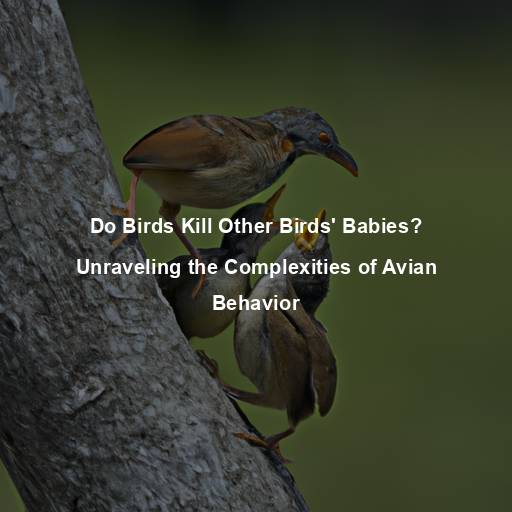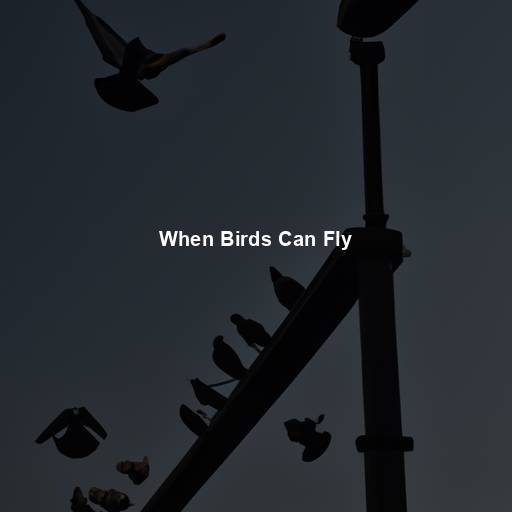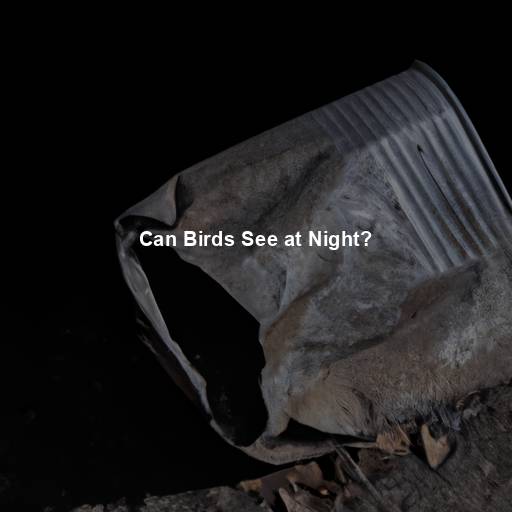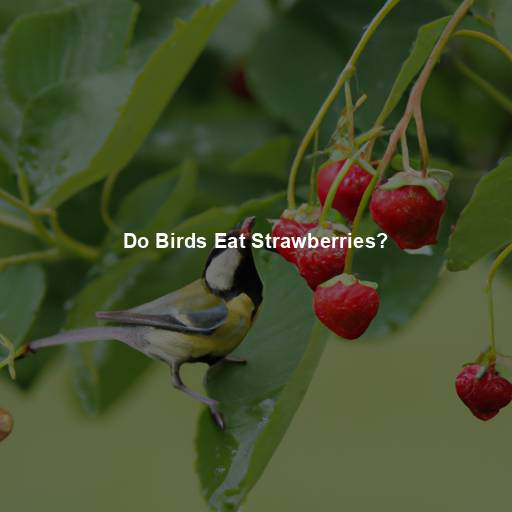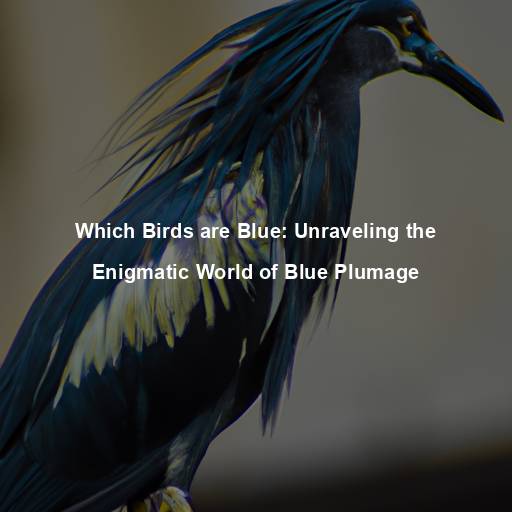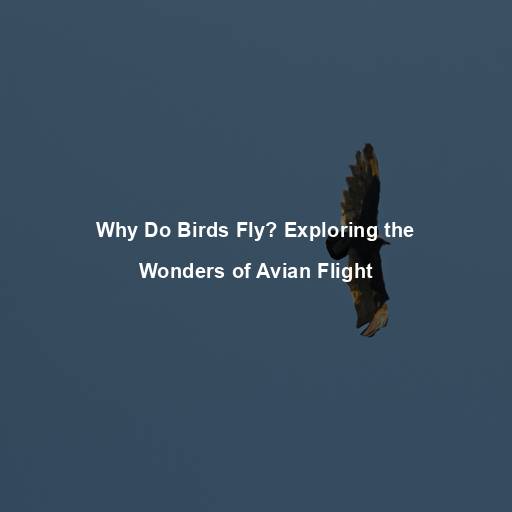How Birds Are Born: An In-Depth Exploration of Avian Reproduction
Last Updated on August 3, 2023 by Evan
Contents [hide]
- 1 Understanding Avian Reproduction: A Fascinating Journey into the World of Birds
- 1.1 The Courtship Dance: Paving the Way for Avian Romance
- 1.2 Nesting: The Art of Creating a Safe Haven
- 1.3 The Egg: Nature’s Precious Package
- 1.4 Incubation: Warmth and Vigilance
- 1.5 From Egg to Hatchling: The Miracle of Life Unfolds
- 1.6 Parental Care: Nurturing the Young
- 1.7 Growth and Development: The Journey to Adulthood
- 1.8 The Circle of Life Continues
- 2 Unveiling the Wonders of Life: Awe-Inspiring Bird Birth
- 3 The Miracle of Song: Bird Vocalizations and Reproduction
- 4 The Evolutionary Significance of Avian Reproduction
- 5 Conservation and Threats to Avian Reproduction
- 6 A Celebration of Life: The Beauty and Complexity of Bird Birth
- 7 FAQs – How Birds are Born
- 7.1 What is the process of bird reproduction?
- 7.2 How do birds create the eggs?
- 7.3 Do both male and female birds contribute to the egg fertilization?
- 7.4 How long does it take for a bird egg to hatch?
- 7.5 What happens during incubation?
- 7.6 Can birds reproduce without laying eggs?
- 7.7 How do baby birds break out of their eggs?
- 7.8 Are baby birds able to fly immediately after hatching?
- 7.9 What should I do if I find a baby bird outside its nest?
- 7.10 How long does it take for baby birds to become independent?
Understanding Avian Reproduction: A Fascinating Journey into the World of Birds
Birds, with their vibrant plumage and melodious songs, have captured the human imagination for centuries. These winged creatures are not only a delight to observe but also hold a mysterious secret within their lifecycle—the process of reproduction. In this article, we will embark on a captivating journey to unravel the intricacies of how birds are born. From courtship rituals to nest-building, incubation to hatching, and finally, the growth of fledglings, we will explore every stage of avian reproduction.
The Courtship Dance: Paving the Way for Avian Romance
Before the miracle of life can unfold, birds engage in elaborate courtship displays and rituals. These displays serve as a means for potential mates to evaluate each other’s suitability and establish a strong bond. Each species has its unique courtship behaviors, ranging from intricate dances to intricate vocalizations and dazzling plumage displays. For instance, the male peacock’s resplendent tail feathers and rhythmic shaking are a captivating spectacle, enticing potential mates with its vibrant hues and rhythmic patterns.
Nesting: The Art of Creating a Safe Haven
Once a pair of birds has formed a strong bond through courtship, they embark on the next crucial step: nest-building. Nest construction is not only a practical necessity but also a testament to the bird’s dedication to creating a safe haven for their future offspring. Birds employ a variety of materials, including twigs, grass, leaves, and even mud, to create their unique nesting structures. From the intricately woven nests of weaver birds to the cozy burrows of kingfishers, each species showcases its architectural prowess and adaptability to its environment.
The Egg: Nature’s Precious Package
Nestled in the intricately built abode, the expectant avian readies herself for the imminent arrival of her precious offspring. Birds, akin to their reptilian counterparts, fall under the classification of oviparous creatures, relying on the laying of eggs for reproduction. These eggs, acting as sanctuaries, offer a nurturing haven for the growing embryo within. Engaging in a remarkable display of diversity, bird eggs exhibit an array of sizes, shapes, and hues, reflecting their unique adaptations to the ecological niches they inhabit.
Incubation: Warmth and Vigilance
As the eggs make their entrance into the world, a wondrous journey commences – the journey towards hatching. It is a time of great anticipation and responsibility for the parent birds, as they take on the task of incubation. Each species has its own timetable, with some eggs requiring only a short stay in the warmth of the nest, while others demand a more patient wait spanning weeks. This delicate dance sees the parents meticulously swapping places, their feathers embracing the eggs with tender love and care, all in the name of maintaining a stable environment for the precious life waiting to emerge.
From Egg to Hatchling: The Miracle of Life Unfolds
As the anticipation builds and time elapses, a minuscule opening emerges on the surface of the egg, evoking curiosity and wonder about what lies within. With determination, the newly formed being, commonly known as a chick, relies on its remarkable egg tooth to break free from its confinement. The marvel of birth unfolds at its own pace, spanning from mere hours to extensive stretches of time, contingent upon the specific species. This captivating spectacle of a delicate, nascent life bursting forth from its sheltering casing serves as a poignant symbol of the start of a fresh lineage.
Parental Care: Nurturing the Young
Once the chicks have hatched, the responsibility of the parent birds shifts to providing nourishment and protection to their offspring. Both parents play a vital role in raising their young, with each species exhibiting unique behaviors and strategies. Some birds, like pigeons and doves, produce a specialized secretion called “crop milk” to feed their young. Others, like raptors, regurgitate partially digested food to feed their chicks.
Growth and Development: The Journey to Adulthood
The journey of young birds is a perplexing tale of transformation and growth. Like a burst of life, their downy fluff undergoes a dramatic makeover as it is slowly replaced by majestic feathers, becoming their very own thermal regulators and wings of flight. Guided by their parents and fueled by practice flights, these fledglings embark on a quest to acquire the essential skills needed to navigate and survive in their intricate surroundings. Awaiting them is a vast spectrum of time, as some species triumph over the passage to adulthood in a mere few weeks, while others endure a prolonged metamorphosis that can span months, if not years.
The Circle of Life Continues
As the fledglings spread their wings and take flight, the captivating cycle of avian reproduction reaches a profound climax. Through the course of time, these youthful birds transform into reproductive adults, preserving the very essence of their species. From the enchanting rituals of courtship to the remarkable craftsmanship of their nests, the intricate tapestry of avian life unfolds with perplexing beauty. And as the eggs hatch, the tender care bestowed upon the newborns marks the beginning of a new generation, perpetuating the wonder of avian existence.
Unveiling the Wonders of Life: Awe-Inspiring Bird Birth
The journey of how birds are born is a testament to nature’s ingenuity and resilience. From the captivating courtship rituals to the nurturing care of their young, birds exemplify the wonders of life’s creation. As observers of the avian world, we are privileged to witness these miracles unfold before our eyes. Let us continue to cherish and protect these magnificent creatures, ensuring that the beauty of bird birth continues to inspire generations to come.
Avian Reproduction in Different Environments
Birds have evolved a wide range of reproductive strategies to adapt to diverse environments and ecological niches. In some species, such as penguins and albatrosses, both parents take turns incubating the eggs and caring for the young. This cooperative breeding behavior ensures the survival of the offspring, even in harsh and challenging environments. Other birds, like ducks and geese, lay their eggs in nests built near bodies of water, allowing the young to swiftly enter their aquatic habitat soon after hatching.
Cavity Nesters: Utilizing Existing Structures
Many bird species have found innovative ways to create nests by utilizing existing structures, such as tree cavities or abandoned burrows. Woodpeckers, for example, excavate holes in tree trunks to create their nests, while owls and parrots take advantage of natural cavities or abandoned nests created by other birds. By repurposing these pre-existing structures, cavity-nesting birds save time and energy while providing a safe and secure environment for their young.
Brood Parasitism: A Deceptive Strategy
Intriguingly, not all birds follow the traditional path of incubating and raising their own young. Some species, like the infamous cuckoo, employ a deceptive strategy known as brood parasitism. Female cuckoos lay their eggs in the nests of other bird species, tricking them into incubating and raising their offspring. The cuckoo chick, hatched first, often pushes the host bird’s eggs or chicks out of the nest, ensuring all parental care and resources are directed solely towards its own survival.
The Miracle of Song: Bird Vocalizations and Reproduction
Courtship Songs: Melodies of Love
Avian courtship is a remarkably captivating affair, with the enigmatic allure of vocalizations taking center stage. Male birds, in a sheer display of artistry, woo potential partners through intricate melodies that highlight their vocal finesse. These songs, unique to each species, not only captivate the ear but also enable individuals to discern and choose suitable mates based on their dulcet performances. The intricacy and caliber of a male bird’s melodic masterpiece serve as indicators of his genetic prowess and capacity to nurture future offspring, rendering it an indispensable facet of the enthralling courtship dance.
Vocal Learning in Birds: A Remarkable Skill
The avian world never ceases to astonish with its tapestry of melodic marvels. Beyond the realm of instinctual chirps and calls, certain feathered creatures possess an astonishing talent: the power to learn and imitate the sounds that envelop their environment. Picture the enchanting songbirds, the colorful parrots, and the dainty hummingbirds, all endowed with an extraordinary knack for vocal acquisition. These creatures embark upon a captivating journey, absorbing the melodies of their parental figures and dedicating countless hours to refining their own vocal toolbox.
Duet Singing: Harmonious Partnerships
Birds are like tiny maestros in their own right, conducting harmonious symphonies with their beaks. In some avian species, both males and females engage in a delightful dance of duet singing, a passionate performance that solidifies their timeless bond. These melodious duets are most prevalent among birds who are in it for the long haul, sticking together through thick and thin to ensure the success of their cooperative brood. Through the art of duet singing, these feathered soulmates not only serenade one another but also send a resounding message of unity, devotion, and unwavering commitment to their shared offspring.
The Evolutionary Significance of Avian Reproduction
The Evolution of Incubation Behavior
The evolution of incubation behavior in birds has played a crucial role in their reproductive success. The transition from reptilian-like egg-laying to the development of parental care during incubation has provided numerous advantages. By incubating their eggs, birds can ensure a stable and optimal environment for the developing embryos. This behavior also allows for more efficient gas exchange, protection against predators, and temperature regulation, ultimately increasing the chances of successful hatching and survival of the offspring.
The Role of Plumage in Reproduction
Have you ever wondered why birds flaunt their vivid and intricate feathers? Turns out, these flamboyant displays serve quite a multitude of purposes. Firstly, they act as a magnet, alluring potential partners and safeguarding territories. Furthermore, the evolution of bright plumage is heavily influenced by sexual selection – female birds tend to be drawn towards males with more vibrant colors.
Coevolution with Plants: A Symbiotic Relationship
The intricate dance between birds and flowering plants has sculpted the web of life in remarkable ways. These feathered creatures, with their nectar-feeding tendencies, have sparked a mesmerizing coevolutionary dance, compelling flowers to don tailored outfits to suit their tastes. And while flowers benefit from the nourishment birds provide, these avian marvels depend on these floral feasts to sustain themselves during the breeding season. But there’s more to this story – birds, the ultimate wanderers, carry the responsibility of seed dispersal as they munch on succulent fruits and give birth to new life through their droppings.
Conservation and Threats to Avian Reproduction
Habitat Loss and Fragmentation
One of the greatest challenges facing avian reproduction is the loss and fragmentation of natural habitats. Deforestation, urbanization, and agricultural expansion have resulted in the destruction of crucial nesting sites and food sources for many bird species. As their habitats shrink and become fragmented, birds face increased competition for limited resources, reduced breeding success, and a higher risk of predation. Conservation efforts aimed at preserving and restoring habitats are essential for ensuring the continued survival of avian populations and their reproductive success.
Climate Change and Altered Breeding Patterns
The rapidly changing climate poses a significant threat to avian reproduction. Rising temperatures, altered precipitation patterns, and shifting seasons can disrupt the delicate timing of breeding cycles and migration patterns. Birds rely on environmental cues, such as temperature and day length, to initiate their breeding behaviors. Any disturbance in these patterns can lead to mismatches between the availability of food resources and the arrival of migratory birds, resulting in decreased reproductive success and population declines.
The Impact of Pollution and Pesticides
Pollution, including the use of pesticides and chemical pollutants, poses a significant threat to avian reproduction. These substances can accumulate in bird eggs, leading to thinning of eggshells, reduced hatching success, and developmental abnormalities in the embryos. Additionally, the loss of insect populations due to pesticide use can have detrimental effects on bird populations that rely on insects as a food source during the breeding season. Strict regulations, sustainable farming practices, and the preservation of natural habitats are essential for minimizing the impact of pollution on avian reproduction.
A Celebration of Life: The Beauty and Complexity of Bird Birth
As our exploration of avian reproduction comes to a close, we find ourselves captivated by the intricate and extraordinary experience of bird birth. The intricate courtship rituals, the meticulous construction of nests, the delicate process of incubation, and the unwavering care provided by devoted parent birds all leave us in a state of wonderment. Each step in this perplexing journey showcases the brilliance of nature and the remarkable adaptations that birds have evolved over the course of countless millennia. By delving into the complexities of avian reproduction, we not only deepen our connection to the natural world but also come face to face with the urgency of conservation and safeguarding these magnificent creatures for generations to come.
FAQs – How Birds are Born
What is the process of bird reproduction?
In the fascinating world of avian life, the miracle of reproduction takes flight through the enigmatic process of oviparity. With an air of mystery and wonder, the female bird, crowned as the elegant hen, embarks on a captivating journey. Deep within her wondrous body, delicate eggs begin to take shape, patiently awaiting their grand debut. Once the eggs have reached their splendid culmination, the hen sets out on a quest to find the perfect sanctuary, a nesting haven where these precious orbs of life can bloom under the gentle warmth of incubation.
How do birds create the eggs?
The journey of egg formation within a female bird is a perplexing and beguiling process. It all starts with the creation of a luscious yolk, brimming with vital nutrients that will nourish the potential life within. This yolk is then carefully ensconced in multiple layers of albumen, an enigmatic substance famously known as egg white, that acts as a maternal safeguard. Lastly, this delicate creation finds its shelter within a brittle and porous shell, a shield from the outside world. The intricate mechanisms behind the birth of an egg truly leave us in awe and wonder.
Do both male and female birds contribute to the egg fertilization?
Yes, in most cases, both male and female birds are involved in the fertilization process. The male bird, known as the rooster, transfers sperm to the female’s reproductive system during mating. The sperm then fertilizes the mature egg cells within the female bird’s body, initiating the development of an embryo.
How long does it take for a bird egg to hatch?
The hatching period varies depending on the species of the bird. It can range from a few days to several weeks. On average, most bird eggs take around two to four weeks to hatch. However, larger birds, such as eagles or ostriches, may have significantly longer incubation periods.
What happens during incubation?
Throughout the delicate phase of incubation, the precious eggs are gently cradled and safeguarded in a cozy nest by the doting parent birds. With unwavering dedication, they embrace this task, imparting the perfect balance of warmth needed to nurture the embryonic life within. A beautifully choreographed routine unfolds as the devoted parents meticulously alternate their roles, ensuring each egg receives the utmost care and attention it deserves. Enveloped in a realm of mystery and awe, the process of incubation continues to amaze and bewilder, as nature intricately weaves its enchanting tapestry of life.
Can birds reproduce without laying eggs?
While the vast majority of birds reproduce by laying eggs, there are a few exceptions. Certain bird species, such as some cuckoos and megapodes, have evolved to practice brood parasitism or mound-building reproduction. Brood parasitism involves laying eggs in the nests of other birds, while mound-building species bury the eggs within warm soil or compost to incubate them.
How do baby birds break out of their eggs?
Witness the incredible journey of baby birds as they embark on a perplexing mission to break free from their shell. Armed with a fascinating adaptation called an “egg tooth,” these remarkable hatchlings muster all their strength and determination to crack the impenetrable fortress of their fragile homes. Through the intricate process known as pipping, these tiny beings unveil their resilience as they chip away at their encasement, symbolizing the indomitable spirit of life’s enigmatic beginnings.
Are baby birds able to fly immediately after hatching?
Contrary to popular belief, the notion that baby birds take flight straight out of the egg is nothing but an avian myth. These delicate creatures, upon hatching, are far from fully fledged and self-sufficient. Their eyes remain sealed, their bodies devoid of feathers, and their muscles unfit for the skies. Instead, these vulnerable souls depend entirely on their parents for nourishment, shelter, and the precious warmth of their wings. It is only after an arduous journey of growth, when feathers unfurl, muscles strengthen, and aerial lessons are tame, that these young aviators spread their wings and take flight into a realm of boundless possibilities.
What should I do if I find a baby bird outside its nest?
Encountering a baby bird in the great outdoors can leave us feeling both captivated and perplexed. The question of what to do next can be as varied as the feathers on the bird itself. It all boils down to one key factor: the age and condition of the little avian wonder before us. Should we stumble upon a fledgling, it is often wise to allow Mother Nature to take the reins, for this feathered friend is likely on the cusp of taking flight, with doting parents keeping a watchful eye nearby. But if fate finds us face-to-face with an injured or ailing nestling, it becomes our responsibility to summon the aid of local wildlife authorities or skilled rehabilitators, who possess the expertise to provide the tender care that it so desperately needs.
How long does it take for baby birds to become independent?
In the intricate world of nature, the path to independence for baby birds ebbs and flows, as the timeline dances amidst the diverse tapestry of species. With their parents as devoted mentors, the young avians embark on a journey of discovery, spanning weeks of tender nurturing and invaluable life lessons. Amidst the bewildering spectrum of survival, our fledglings master the art of sourcing nourishment, evading the voracious clutches of predators, and finally, taking flight. Slowly but surely, they unravel the bonds of dependence and embrace the unknown, venturing beyond the familiar reaches of their parents’ realm to carve their own fate.

